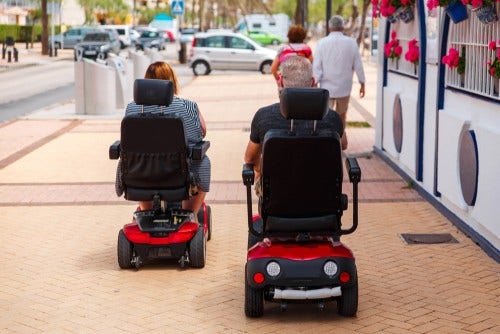
What is Durable Medical Equipment (DME)?
As the name suggests, durable medical equipment, also known as DME, is medical equipment that can withstand repeated use. This equipment must meet certain requirements, which can be complex, to be covered by Medicare, Medicaid, or insurance.
Examples of DME
Common types of DME that Medicare may cover include but are not limited to:
- Wheelchairs and scooters
- Walkers, canes, and crutches
- Blood sugar monitors and test strips
- Respiratory equipment including oxygen, Continuous Positive Airway Pressure (CPAP) devices, and nebulizers
- Commode chairs
- Suction and traction devices
- Patient lifts
- Hospital beds
Durable Medical Equipment Qualifications
To qualify for coverage under Medicare, DME must generally:
- Withstand repeated use: Bandages, gloves, and other disposable medical products that are single or limited use are generally not considered DME.
- Be medically necessary: If a medical device is not deemed medically necessary, it generally won't qualify for coverage by Medicare, Medicaid, or insurance.
- Be used in your home: DME can generally be used outside your home, but it should be necessary inside your home too if you’re looking to get the equipment covered by Medicare.
- Last at least three years: Durable medical equipment must not only withstand repeated use but be expected to last at least three years too.
The above list can generally be applied when purchasing DME through Medicaid and insurance too.
Is DME Covered by Medicare?
Medicare, along with other insurance providers, generally covers a variety of durable medical equipment when it is deemed medically necessary and prescribed by a healthcare provider. However, coverage can differ widely based on the specifics of your Medicare plan and individual circumstances.
When seeking coverage for mobility aids under Medicare, Medicaid, or insurance, it's important to understand the requirements. For example, if you're an ambulatory wheelchair user with independence at home but need assistance outside, consider how you use mobility aids. Are they essential for daily tasks, or mainly for long distances like trips to amusement parks or malls? If used for convenience, the equipment may not qualify for coverage.
Assess the physical, social, and emotional benefits of a mobility aid. If it significantly enhances your quality of life beyond physical health, discuss this with a medical professional, as it can influence coverage decisions.
Both non-custom and custom mobility aids can qualify as DME. For custom wheelchairs, although they are designed to last at least three years, most insurance policies require you to use them for five years before approving a replacement. However, other mobility aids like crutches or braces don't have a fixed replacement timeline. They are typically replaced when they become non-functional or if there is a significant change in an individual’s mobility needs. For detailed guidance on mobility aids and DME coverage, it's best to contact your Medicare, Medicaid, or insurance provider.
What Won't Medicare Pay For?
Coverage for non-durable medical equipment can vary. For example, Medicaid, Medicare, and insurance often do not cover non-durable medical equipment. Additionally, home modifications like grab bars, shower chairs, stair lifts, or wheelchair ramps may not be covered unless deemed medically necessary.
Example of Non-Durable Medical Equipment
Medicare typically does not cover disposable medical items unless they are prescribed by a healthcare provider and deemed medically necessary. Examples of such items include:
- Bandages
- Gauze
- Syringes
- Disposable gloves
- Incontinence pads
- Wound care supplies
Some medical products, while generally not covered, can fall under the category of DMEPOS (Durable Medical Equipment, Prosthetics, Orthotics, and Supplies) when prescribed for medical necessity. This includes supplies like catheters, and feeding tube supplies. Coverage in these cases ensures patients have access to essential items for managing chronic conditions. It is important to verify with your Medicare, Medicaid, or insurance provider and consult with your medical providers to understand medical necessity, coverage options, and alternative funding solutions if needed.
Are Wheelchair Vans Covered by Medicare?
Medicare does not cover the cost of wheelchair accessible vehicles, as these are not considered durable medical equipment.
Medicare is split into four parts, each covering different services:
- Part A: Covers hospital stays, skilled nursing, and hospice care.
- Part B: Covers outpatient services like doctor visits.
- Part D: Covers prescription drugs.
Medicare Part C, also known as Medicare Advantage, is offered by private insurance companies and provides an alternative way to receive Medicare benefits. These plans might offer some transportation benefits, like rides to medical appointments, but do not cover the purchase or modification of wheelchair accessible vehicles.
Durable medical equipment can provide mobility and independence in your home, but having reliable transportation to get out in your local community can allow you even more independence. Whether you’re driving to and from work, the local grocery store, or even going out with friends, a wheelchair accessible vehicle can positively impact your quality of life. If you’re looking to purchase a wheelchair accessible vehicle or mobility product, contact your local BraunAbility dealer today.




